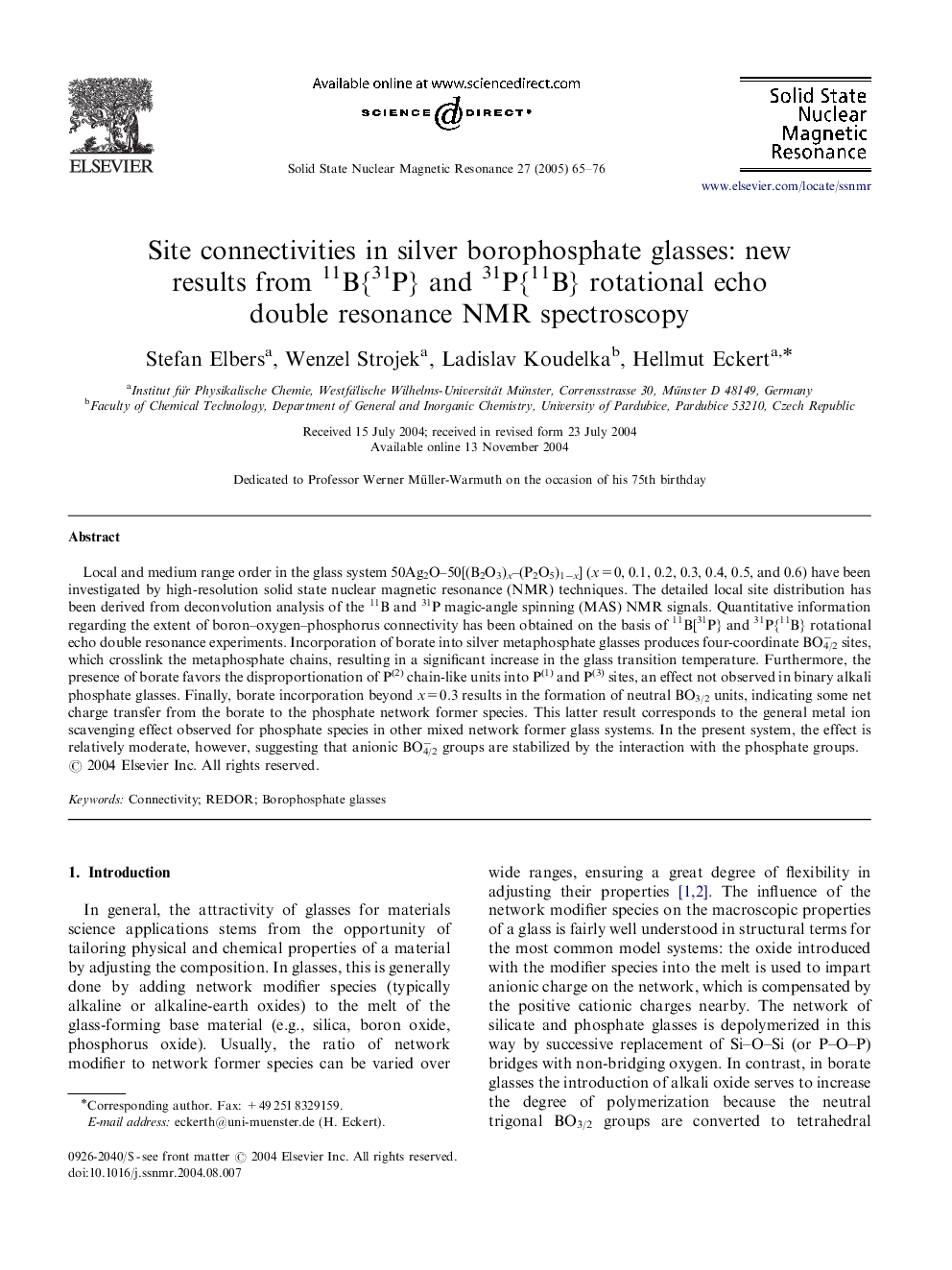| Article ID | Journal | Published Year | Pages | File Type |
|---|---|---|---|---|
| 9594228 | Solid State Nuclear Magnetic Resonance | 2005 | 12 Pages |
Abstract
Local and medium range order in the glass system 50Ag2O-50[(B2O3)x-(P2O5)1âx] (x=0, 0.1, 0.2, 0.3, 0.4, 0.5, and 0.6) have been investigated by high-resolution solid state nuclear magnetic resonance (NMR) techniques. The detailed local site distribution has been derived from deconvolution analysis of the 11B and 31P magic-angle spinning (MAS) NMR signals. Quantitative information regarding the extent of boron-oxygen-phosphorus connectivity has been obtained on the basis of 11B[31P} and 31P{11B} rotational echo double resonance experiments. Incorporation of borate into silver metaphosphate glasses produces four-coordinate BO4/2â sites, which crosslink the metaphosphate chains, resulting in a significant increase in the glass transition temperature. Furthermore, the presence of borate favors the disproportionation of P(2) chain-like units into P(1) and P(3) sites, an effect not observed in binary alkali phosphate glasses. Finally, borate incorporation beyond x=0.3 results in the formation of neutral BO3/2 units, indicating some net charge transfer from the borate to the phosphate network former species. This latter result corresponds to the general metal ion scavenging effect observed for phosphate species in other mixed network former glass systems. In the present system, the effect is relatively moderate, however, suggesting that anionic BO4/2â groups are stabilized by the interaction with the phosphate groups.
Related Topics
Physical Sciences and Engineering
Chemistry
Physical and Theoretical Chemistry
Authors
Stefan Elbers, Wenzel Strojek, Ladislav Koudelka, Hellmut Eckert,
